
Opening Day 2022 Miramichi Salmon Fishing Report
Fishing Friends – It has been a few years since I was on the Miramichi for opening day, but with the ice going out in time, and decent water conditions available, I couldn’t stay away. I had half forgotten what a great adventure a trip to Miramichi country is at this time of the year. The ride up from Falmouth was like rewinding the past couple of weeks. It certainly isn’t summer here in coastal Maine, but the grass is green and growing, and the leaves are already out on the honeysuckle understory in the woods surrounding my yard. Snow seems like a distant memory, though it has only been gone a couple of weeks. By the time I got to Millinocket I could see snow everywhere in the woods. On the ride across from Fredericton to Blackville all the streams were rushing along bank full. It was exciting. If only we could save a little more of that for mid-July!
I arrived on Thursday afternoon and had to unload in a cold rain. A half-dozen, skinny deer where looking for anything nourishing amidst the dead grass in the fields along the driveway. Darrell and Nick already had the swallow and bluebird boxes up around the yard, and one of the long canoes was upside down on saw horses, waiting for some better weather to re-coat the bottom.
Opening day dawned gray, cool, and raining lightly – a perfect fishing day… Like so many spring fishing days, Friday, April 15, 2022 was a day to protect yourself from the elements. I had on standard issue green, wool pants, heavy flannel shirt, thick wool sweater, Thinsulate vest, and an Orvis rain jacket. The most important equipment of all, though was on my feet. I had never spent an opening day with warm feet until this day. The new Lacrosse boots that WS Emerson had donated to our MSA winter event, combined with a single pair of Darn Tough boot socks worked like a miracle.
Over the years I’ve done most of my kelt fishing in the “Golden Horseshoe” so-named by Wades Fishing Lodge for its good numbers of kelts, and in the general vicinity of the mouth of Cains River. I had always heard about the good fishing around the Doctor’s Island stretch of the river, but since it was twice as far away as the Cains, and my early guides on the river weren’t used to fishing it, I never went there. That area, though, is one of Darrell Warren’s favorites in his many years of spring fishing experience, so we ran down there for our start.
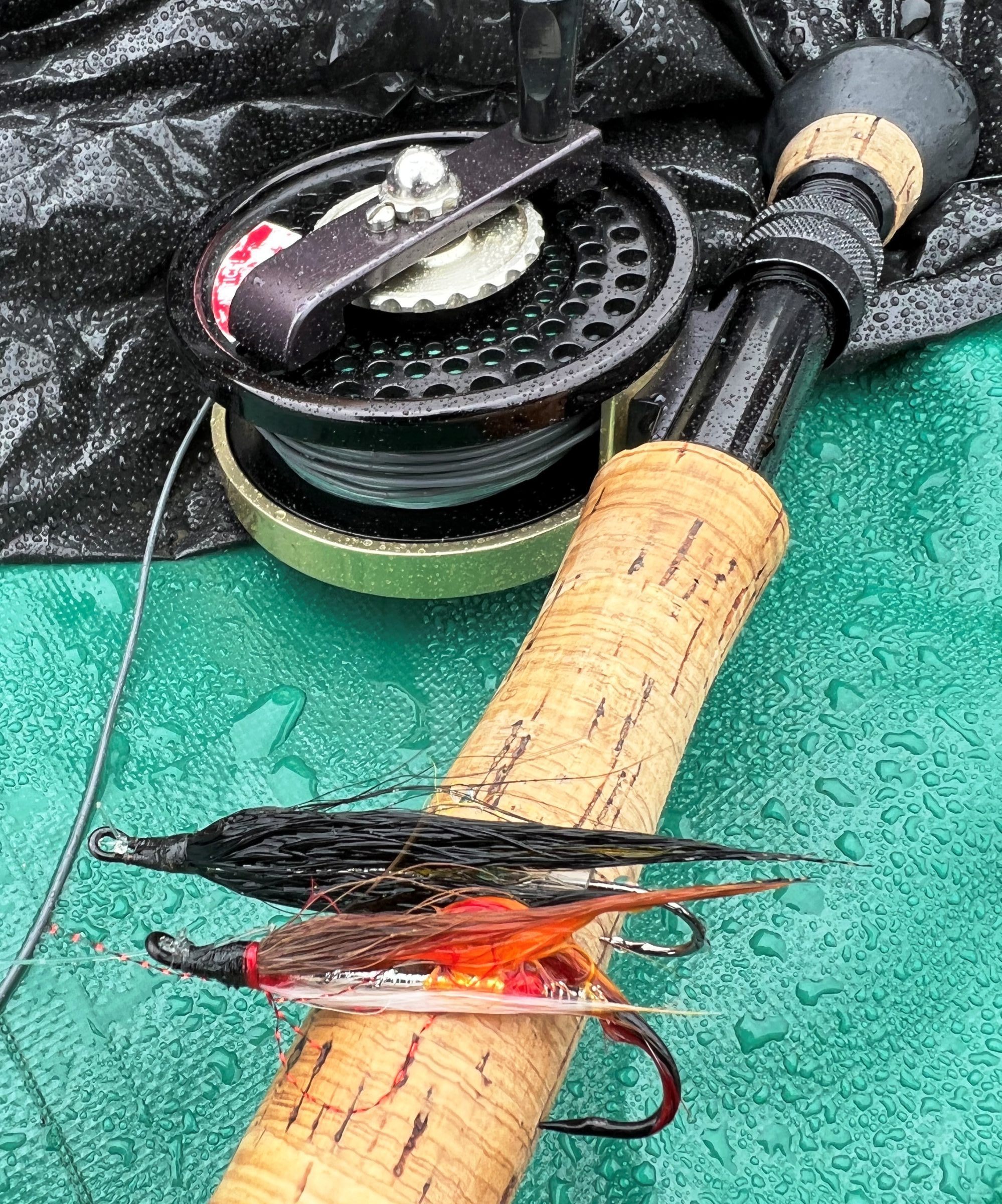
A couple of productive spring flies. The red and yellow marabou in the foreground shows evidence of being chewed. Note the barbless hook.
When we got down to Doctor’s Island there were already at least a dozen boats working here and there. Some were trolling, some long-lining along the shore, and others anchored and casting to the sides. Spring salmon fishing is not a sport of delicate presentations and fine leaders at the end of floating lines. I was using a 450 grain sinking-head line, and six feet of 20-pound-test for a leader. I will say, though, that sometimes the fish are not just laying along the bottom as often thought. We anchored up, and I tied on a #2 red and orange marabou streamer, threw it over the side with about 4 feet of fly line beyond the rod tip, set the rod down, and reached up to adjust the hood on my rain jacket. The fly, still floating, drifted back with the current until the line became tight and the flow sucked it under the surface. It was instantly taken by a feisty grilse, which began jumping around almost at the end of my rod tip before becoming quickly unhooked. It was quite a start.
Soon I became aware that boats all around us were hooked up, and playing and releasing fish. The action was very good, and I was pleased to see so many fishermen with the big, rubber landing nets taking the time to release their fish with the care that these salmon deserve. A fairly high percentage of the kelts that have survived to this point will go a short distance off the coast, rebuild on smelts and other inshore fish, and return during the same summer as repeat spawning bright fish. These fish are potentially very valuable spawners for the Miramichi. I can tell you the conservation ethic has come a long way in the brief 20 years that I have been participating in this fishery.
David Donahue has been restoring the old buildings on Doctor’s Island. Click the bold link to see this movie of the main lodge with the New Brunswick flag flying on opening day. IMG_2850
It appeared to me that there was a fairly even mix of grilse and salmon, and even though it was early in the season I thought the fish looked to be in very good condition. Another bonus to the spring fishing are the brook trout. We caught some everywhere we fished. Most were in the 10 to 12-inch size range – nice brookies – but one of Tyler Coughlan’s customers from Country Haven got one that Tyler said was around 2 ½ pounds, a really lovely fish, and probably a sea run.
The action was quite a bit slower in the afternoon session. It rained all night, and on Saturday morning the river was rising and comparatively dirty with a fair amount of grass. We opted for a change of scenery, and close to the shoreline a few hundred feet below Black Brook we came across a little hot spot that produced a few quick fish plus other strikes. David Donahue, who lives near Doctor’s Island where his father guided for many years, had persuaded me to try a dropper rig. I tied a dropper loop in my leader about 4 feet above my marabou point fly. To this loop I attached a #2 Black Ghost. It seemed that the grilse consistently took the dropper fly while the salmon took the point. It certainly wasn’t a huge sample, but that was the way it seemed to go. I even observed a grilse make several attempts at the Black Ghost while we were trying to net a salmon hooked to the other fly.
In the afternoon on Saturday Dawson Hovey and I fished a stretch down in the Rapid’s section. This was shore fishing along a long grassy bank, and I really enjoyed it. Darryl Curtis had fished it with great success on opening day. Like all fishing on Saturday it was much slower than Friday, but still we pecked away at them. I was casting a Spey rod with a fast sinking tip, and in addition to landing a grilse and a couple of trout, and losing a good salmon, we had 6 or 8 pulls between us that didn’t end up as secure hookups, but it did tell me that fish were there, just hesitant to strike. Darryl who has lived and guided in The Rapids his whole life blamed it on a cold east wind. His opinion is probably better than most. An added bonus was watching a couple of adult eagles surveying a Volkswagen-sized nest in the top of a giant white pine across the river from us.
On Sunday Kevin Harris, past chairman of the MSA board, showed up to pick up the Chestnut canoe he bought at the MSA auction, and Dawson and I drove to Fredericton for Easter dinner via the home of Bill and Joan MacKay in Hayesville. I wrote about Bill who guided at Rocky Brook for more than 30 years in my May of 2019 blog – you can just scroll back to read it. He turns 90 this August and is still fishing the Miramichi. Dawson and Greg Sprague are putting together oral histories of the Miramichi, and are going to get more interviews with Bill this coming year. Hayesville is a short drive upriver from Boiestown, but with that increase in altitude the winter clock rewound even further. The river there was a blue pathway between two banks still thickly covered with ice and snow. Out in the middle, though, it was roaring along with a fair amount of white water. Bill who was a champion canoer in his youth, and has poled every inch of the Miramichi from Boiestown to above Burnt Hill many times, says that this is the first real whitewater rapid as you ascend the Miramichi towards the headwaters.
Let me call your attention again towards FishPal Miramichi. I will be writing regular, hopefully weekly fishing reports and updates for FishPal Miramichi until we can find someone more local to the Miramichi to write them. Check out the website for fishing availability at participating lodges, fishing reports, conservation news from the Miramichi Salmon Association, and any other info you can use on the river. While you are on the site why not sign up for the rod alerts page and the monthly newsletter. A little info on salmon fishing is the kind of thing one never minds having just showing up in their inbox.
There’s almost a month of good spring salmon fishing still to look forward to. All the lodges on FishPal Miramichi participate, so give them a call and get in on the action. After that there will be a week or two’s lull in the action, then the first bright salmon will begin working their way into the system. We can hardly wait for it all to unfold.
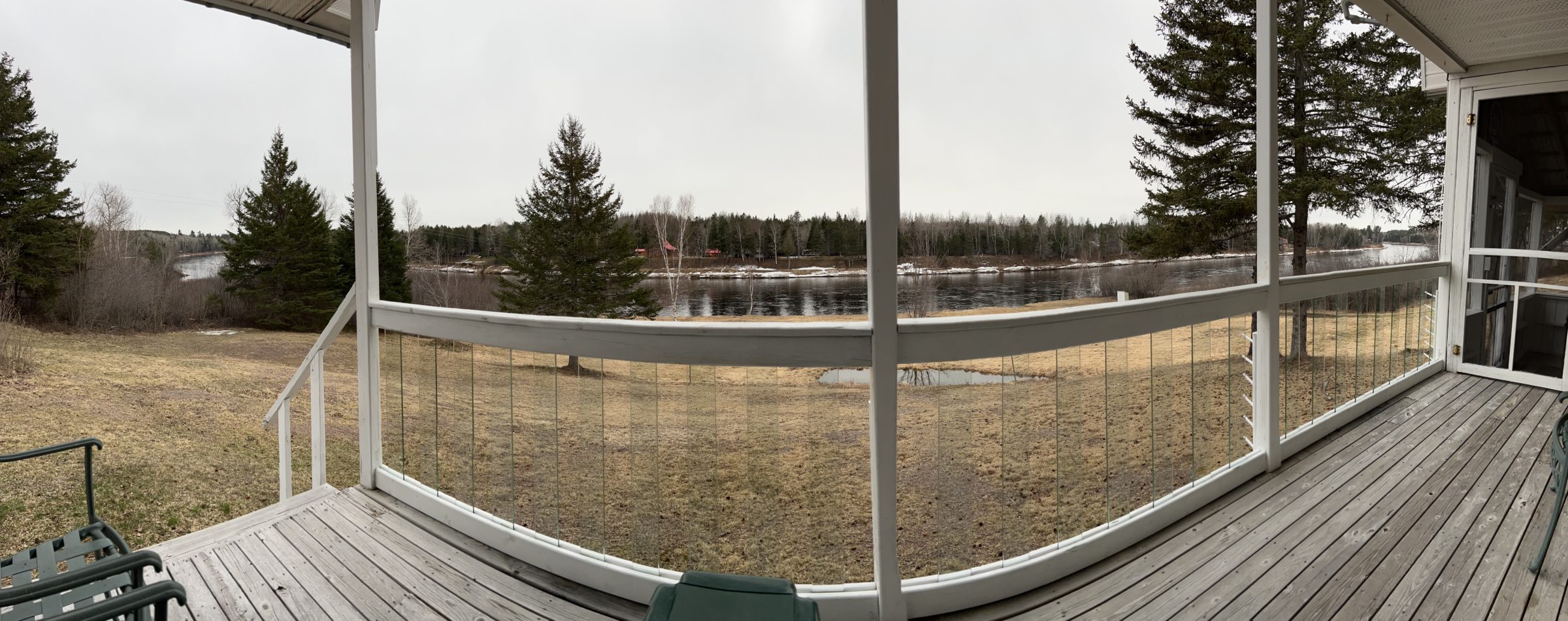
Looking out over the heart of the famous spring fishing grounds of the Golden Horseshoe. In the early 1900s, when William Francis Ganong returned from a tour of the great sites of Europe, he gazed out on a New Brunswick caribou barren and exclaimed “how he had hungered for such scenery” and I know exactly how he felt.
Thanks for reading. While you’re on my website please sign up at the fish for free notices of new blog entries.
Brad Burns
PS Thank you for your support on the introduction of two new books from me, Black Spruce Stream and Maine to Montauk. Both books have been top sellers as new books in their categories on Amazon. You can check them out at the Brad Burns author’s page on Amazon at this link.


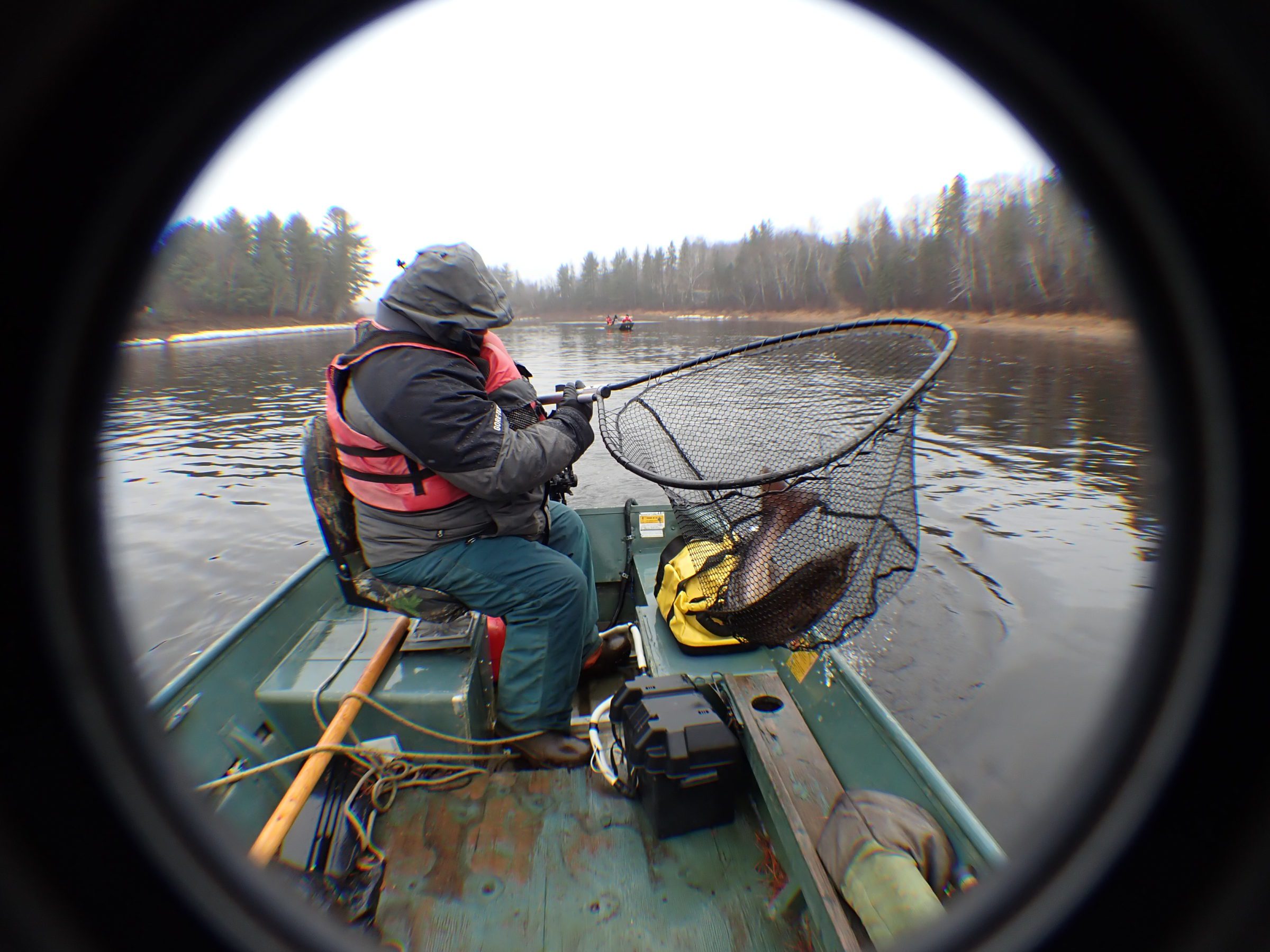
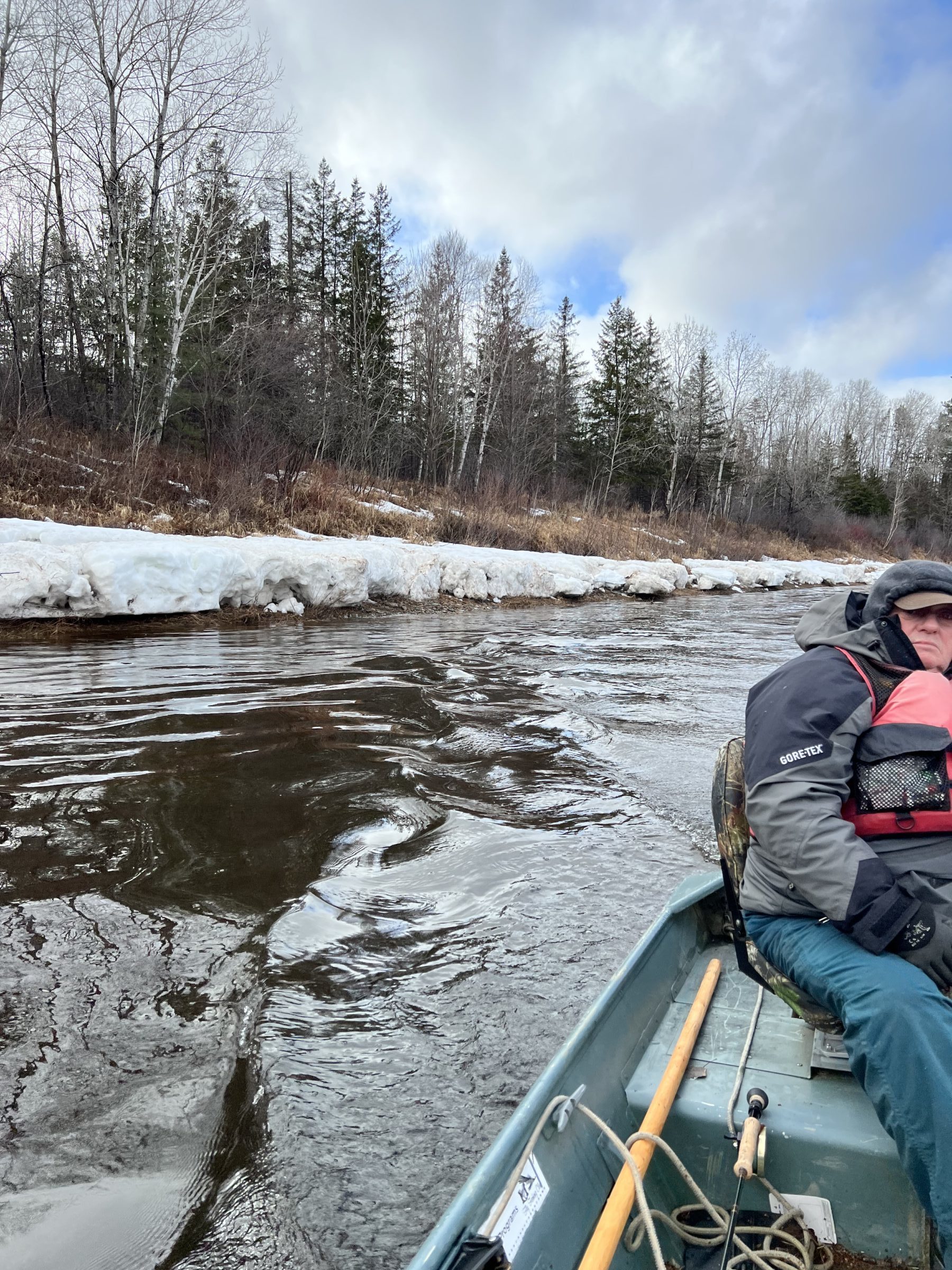
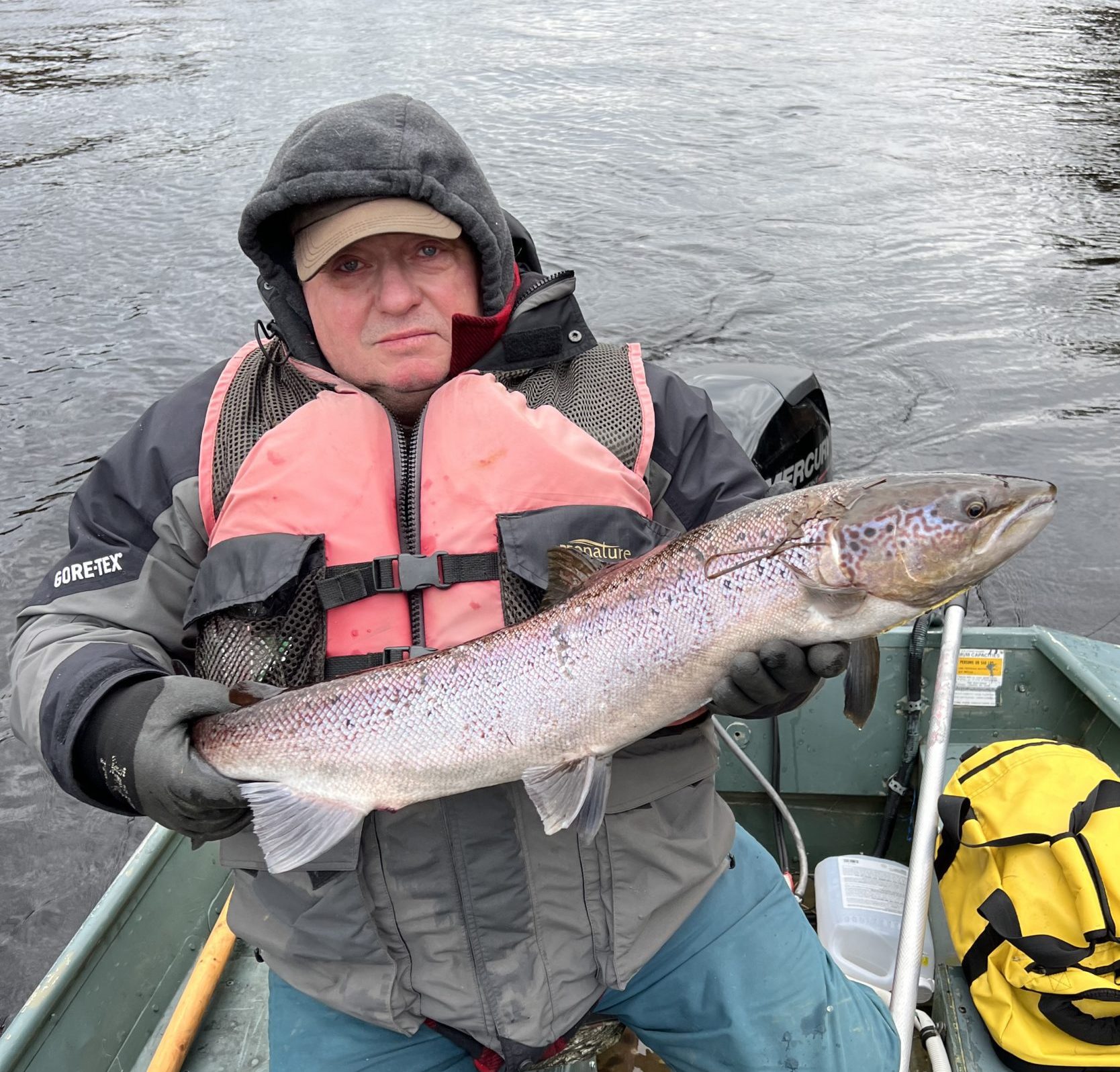
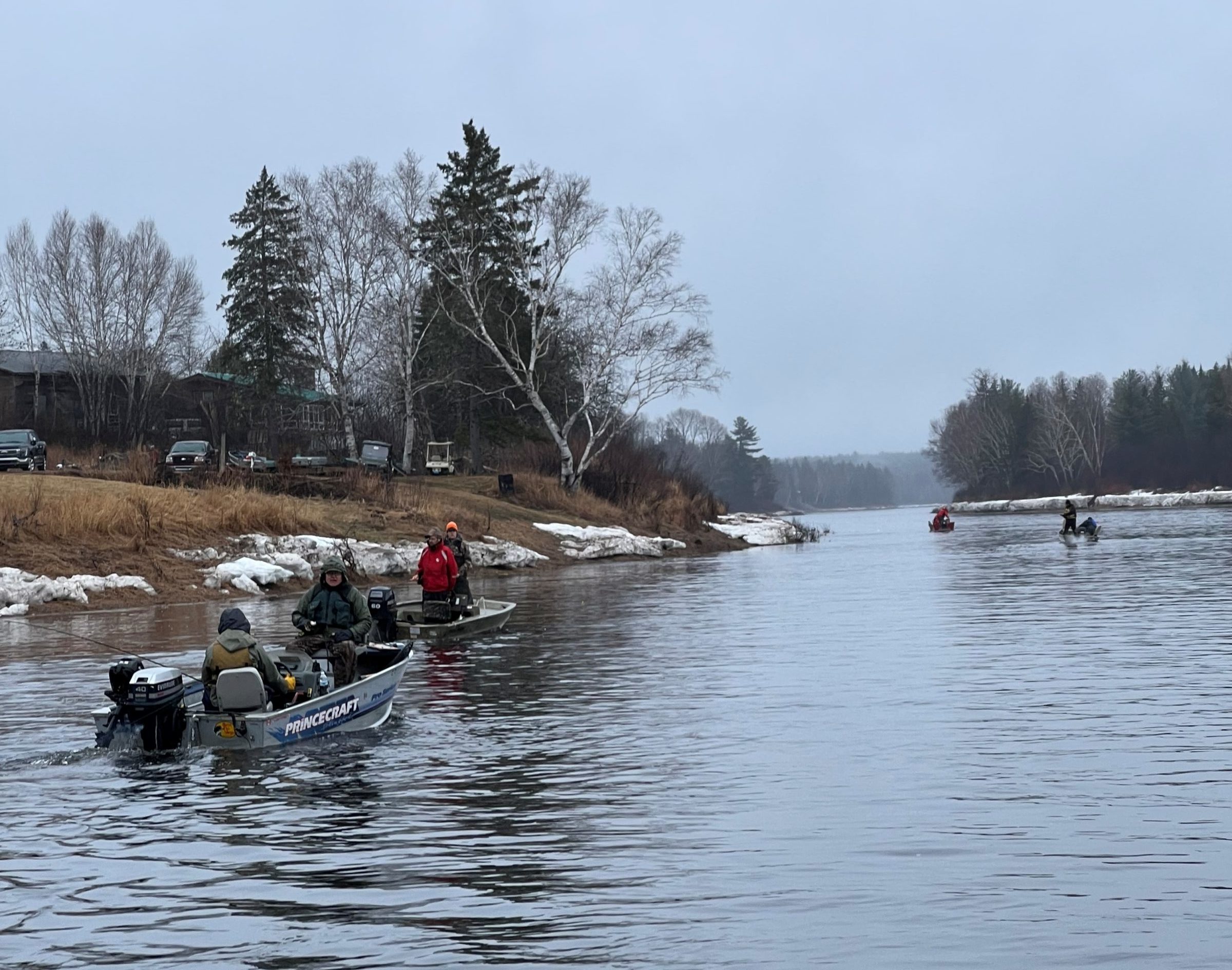
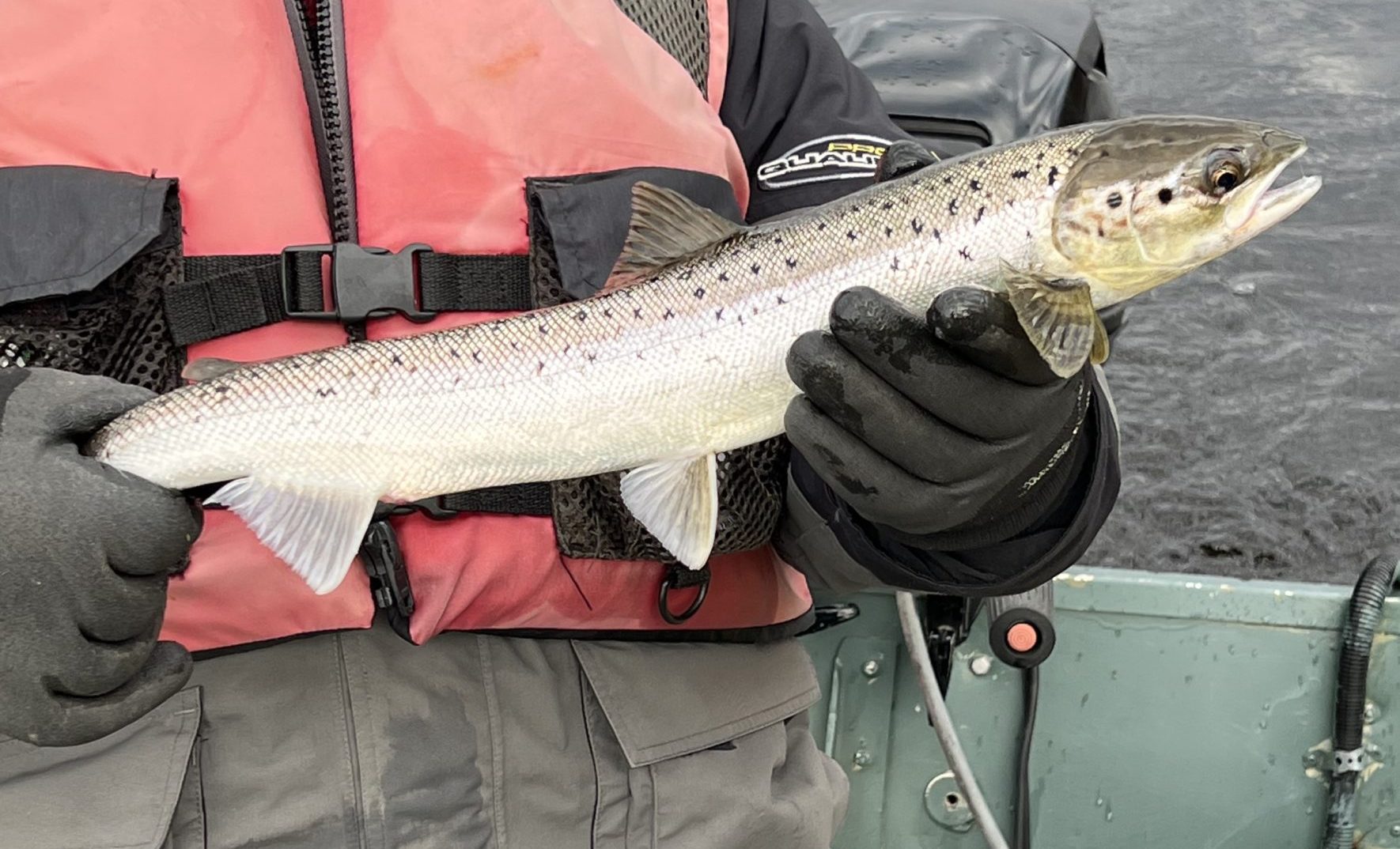
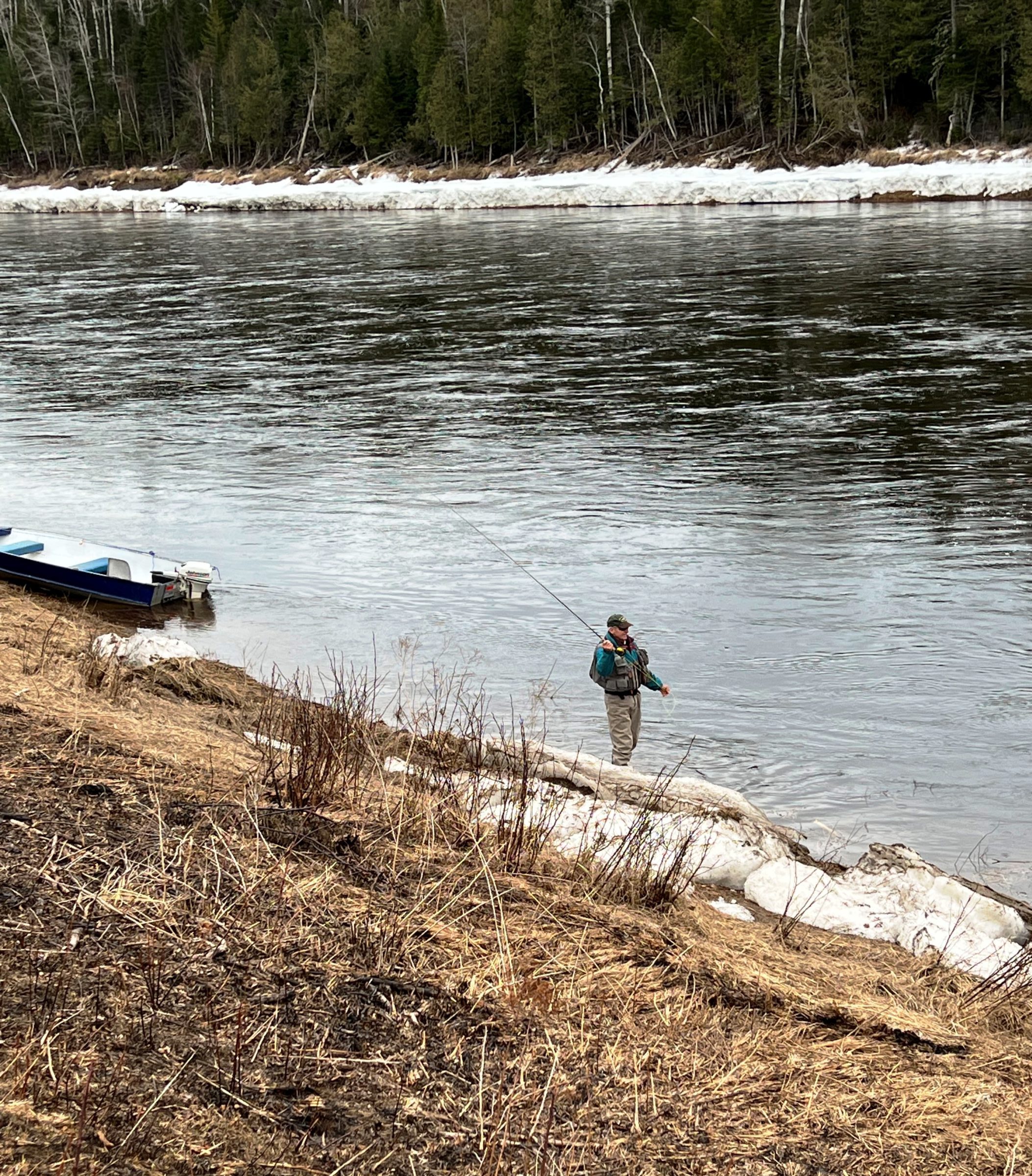
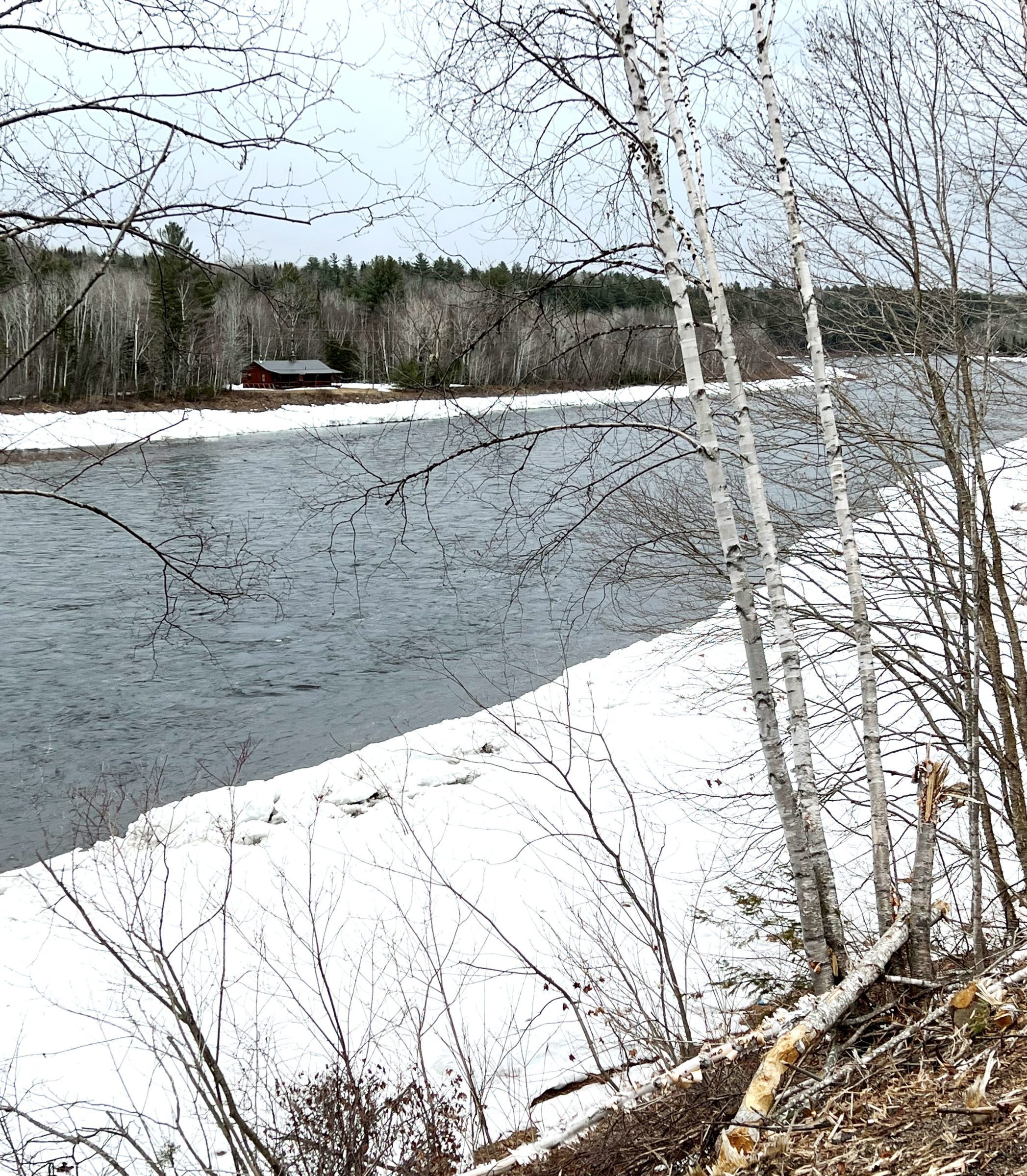
Thanks for the excellent update and photos, Brad… Joe
Thanks Joe!
Enjoyed your report Brad. Looking forward to more and reading your books Bob Hoffmann
Thanks Bob. If you do buy some of my books please give them a review on Amazon. Brad
Great update Brad, thank you for sharing
Thanks Tristan. It is fun to have some salmon fishing to write about!
I love to read anything on the Miramichi.
I respect and enjoy your reports, Brad, and understand the strong magnetic pull of opening day, but if you’ll permit another opinion I think that as a part of our conservation efforts we should be leaving the poor kelts alone. Instead of chasing an emaciated salmon, let them continue on their journey to the ocean, rejuvenate, and catch them when they’ve had the opportunity to restore themselves. To my mind, that would be the sporting and conservation minded approach. And I am surprised MSA does not take that position. Again, respect your work, but wanted to share my two cents. Respectfully, Ben
Hi Ben, great to hear from you. One of my regular fishing companions feels exactly the same way, and I can certainly appreciate your point of view. I will also readily admit that it is really an entirely different sport than fishing for bright, June fish. I have friends in Scotland who even believe that fishing for salmon in the second half of the season is little or no better than fishing for kelts. I suppose that we could argue that hooking any fish for pure fun, pulling it in against its desperate attempts to escape, until it is too tired to resist the strain of the rod and line, is hard to defend. I’m not sure how well I can defend any of it, but I can say that I enjoy fishing for salmon, and we simply can’t kill and eat any measurable percentage of the catch. Catch and release, though, does work. We know that, and it allows us to fish and still have a viable resource. Kelts, as we see from the tagging information, have a very low mortality from being caught and released. In the cold water of April it is really almost zero. On the other hand only a small percentage of them will live to make it back to spawn again – caught and released or not. Statistically anyway it is probably the bright fish that we shouldn’t angle for, but I hope to god I never have to give that up.
Thanks Brad. I love your reports. My mother was born on the Northwest Miramichi and I have many memories from there and now that we can get into Canada, I hope to make many more. Thanks again
Brian
I somehow missed your comment. Thanks Brian. The relaxed border policies are a pleasant change. I was just there and it all went very smoothly.
Brad,
Interesting, thanks.
Were you able to get into Canada without a COVID test?
Yes, there are no test required. You do need to fill out the ArrivCan app, and to have proof of vaccination included. Brad
Terrific report Brad … so great to have you share this with so many … almost gives the reader the sense that they are right there fishing! In spite of the weather the season is off to a great start and with the rain we are getting should enable good fishing throughout the spring season. good to see you briefly and to meet Dawson when you were up. See you again on your next trip!
Thanks Ian. It was great to finally meet you too. Brad
Brad,
As always, very enjoyable reading. Is that your Billy Pate anti-reverse reel shown in the one pic? I bought a near new Billy Pate direct drive salmon reel at an auction several years ago. Sent it down to Tibor and had it converted to left hand wind. They are great reels.
Carl
Carl – back in the early 90s I bought a Salmon and a Bonefish model Billy Pate anti-reverse reels. Large arbor reels were essentially unheard of then. The instruction manual said that the reels were zero maintenance and never needed to be taken apart. I have caught countless numbers of stripers of all sizes on those reels, and used them every year for more than 25 years. All I have ever done is rinse them off after use in the salt, and every winter I spray them with WD-40 and go over them with an old toothbrush. They work exactly as they did when they were new. They are the most satisfactory product of any kind that I have ever purchased.
Hello fishing folks,
100% with Ben Carmichael’s opinion about kelt fishing (19 April). This in view of dwindling bright salmon, not just on the Miramichi, but everywhere else.
Finally had to sell my lovely Bartholomew River Camp due to COVID; never caught the bug, incidentally, but neither did I get vaccinated: Therefore, no more trips to Canada and no camp maintenance. No fun.
Just have to settle for the annual trip to Northern Scotland now; it’s a tough life, I know.
Good memories of casting for brights along the shores of the Miramichi. And just as much fun catching fine fish in some of the more hidden spots up along the Bartholomew …
John Stucki – Geneva/Switzerland
I wish that I’d had a chance to see your camp and fish with you. My old guide Willy Bacso used to say that the Bartholomew was the little-known gem of the Blackville region.
Hello Brad, sorry we missed that opportunity. Your former guide Willy, evidententally he knew a few things ..
I had some fine years on the Barth. Imagine, in the morning, coffe cup in hand, drop a few steps down to the river: If the fish were there, I was pretty sure to get to them; nice feisty fighters they were, too.
Perhaps we’ll hook up in Scotland down the road, Brad, sure hope so. And thank you for what you’re doing for the fishing community.
Best always, jst-Geneva/Switzerland
PS. I’ll be out looking for your (new) books …
Thanks for the kind words John. I lost one of my early March weeks on the Naver when I canceled for Covid, but I am searching around to find a replacement. It isn’t easy. Scottish salmon fishing is in demand. I hope FishPal will also help shore up demand for Miramichi salmon fishing.
Brad – I just got back from the Miramichi and during the trip talked with my son about the conservation ethics of fishing for kelts. I agree with your Scottish friends that fishing for salmon in the second half of the season is hardly more justifiable than fishing for kelts. Those mid-late season fish are in the final stage of a challenging ocean migration, many full of eggs, trying to survive the harshest river conditions! Tough to justify hooking them for sport! But I still do it and try to rationalize it on the basis that we who are so passionate about this species are their strongest advocates and best hope for survival.